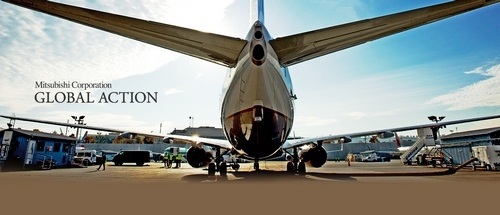Based out in Tokyo Japan Mitsubishi Corporation is conglomerate founded in 1950. With total employee strength of more than 68300, it has emerged as a prominent player in the global market handling businesses in more than 90 countries globally through its 200+ offices and 1250+ subsidiaries.
It is operating in 8 strategic business units (SBU’s) namely business services, Global environmental & infrastructure business, Industrial finance, logistics & development, energy business, metals, machinery, chemicals, and living essential business.
Table of Contents
Segmentation, targeting, positioning in the Marketing strategy of Mitsubishi Corp-
Behavioural & Psychographic are the segmentation strategies used by Mitsubishi to segment the market and cater to the evolving needs of the customers. Mitsubishi looks at various characteristics before deciding whether to segment the premium population or to target value based segments.
Targeting strategy is used by the company selected the segments to which they want to sell the specific products or services. Mitsubishi uses differentiated targeting strategy.
User benefit based positioning strategy is used by Mitsubishi to position itself as a trustworthy and customer friendly conglomerate. Because Mitsubishi has a strong presence in B2B more then B2C, it needs to showcase the benefits of its products.
Marketing mix – Here is the Marketing mix of Mitsubishi.
Mission- “To provide utmost driving pleasure and safety for valued customers and community”
Vision- “Evolving business model from investing to managing”
Tagline-“Not Available”
Competitive advantage in the Marketing strategy of Mitsubishi Corp-
Strategic partnership and alliances: Currently the company is selling its products and services globally with the help of its strategic partnerships and alliances. 813 subsidiaries and 440 affiliates are working together to serve the emerging markets.
Broad product portfolio: Operating in such a large number of products and services enabled the company to leverage its resources across the businesses in order to serve the growing needs of the customer groups.
Strong Hold in the parent nation: Around 52% total revenue of the company comes from the home location i.e. Japan and rest from the emerging markets. Having stronghold in the home location is helping the company in building capabilities across the borders which are promising and is enabling the company in extending its reach to other nations of the world.
BCG Matrix in the Marketing strategy of Mitsubishi Corp-
It’s business verticals business services, Global environmental & infrastructure business, metals, machinery and living essential business stars in the BCG matrix while other businesses such as Industrial finance, logistics & development, energy business, and chemicals are a question mark in the BCG matrix.
Distribution strategy in the Marketing strategy of Mitsubishi Corp-
It works closely with its subsidiaries, affiliates and other stakeholders in order to deliver the MTO (made to order) product & services to the end customers efficiently. Bundling and integrating the product and services is enabling the company to achieve the distribution scale where it can offer the attractive packages at a competitive price.
Brand equity in the strategy of Mitsubishi Corp-
The Mitsubishi corp. is valued at $27.7 billion (market capitalization method as of May 2016) and has been ranked 136 in the list of fortune magazine 2000 brands.
Competitive analysis in the Marketing strategy of Mitsubishi Corp-
Competition is increasing day by day, company’s integrated solution and broad product & services offerings ensure the customer retention and enable the company to bundle its offerings thereby increasing its organic sales. Some of its competitors in various product segments are Mitsui & co., Ltd, Tochu Corporation, Marubeni Corporation offering products and services of various sectors while it competes with companies like Suzuki, Honda, and Hyundai etc. in the automotive segment.
Market analysis in the Marketing strategy of Mitsubishi Corp-
The Company being a conglomerate operate in broad product categories is facing various bottlenecks such as rising labour cost, automation in the industry, regulatory issues, fluctuating exchange rate, rising infrastructure cost, changing lifestyle pattern, the lifecycle of the technological products.
Customer analysis in the Marketing strategy of Mitsubishi Corp-
Customers of Mitsubishi corp. ranges from resellers, distributors, retail customers, government organisations, small enterprises and multinational enterprises depending upon the product or services offered to the customers.
Liked this post? Check out the complete series on Strategies

